As my research on peace has developed further in the direction of taking love and care seriously, and into the practices of inner peace and self-care, I have been reflecting upon self-care within my everyday life. Or, to put it differently, I have been analysing some of the pockets of peace that occur – or that I actively seek out – in my daily life. My research has underlined an important life lesson for me: that peace – and lack thereof – can originate in our own minds.
I realise that am immensely privileged in being able to conduct this kind of research thanks to external factors like where, how, and among whom I have grown up. Thus, the following reflections discuss how I have explored the notion of everyday peace in my life: a relatively secure life. Importantly, I do not intend to steer focus away from peace-building work by and for people whose lives are disrupted by war and conflict. Nor do I want to suggest that the conclusions I have drawn, from my own experiences, are applicable anywhere and everywhere, least of all in conflict zones. I will argue below that peace is a choice that people like me can make; but I am aware, as I make this argument from my position of privileged security, that this only applies in some circumstances and that people living amid or in the aftermath of conflict rarely have that choice.
Peace as a verb
In suggesting that peace is something that people (in secure conditions) can choose to make space for and do, I understand peace as a verb rather than a noun; as an active practice rather than a passive buzzword. This indicates that there are responsibilities involved. Personally, I see it as my responsibility to create peace for and within myself, to then engage peacefully with others and the wider world.
For a moment, reflect upon your life experiences. Do you have space in your mind to think about peace if you are upset about an argument with a friend? If you are dissatisfied with your work or studies? If you have no energy to get out of bed in the morning (or at all)? All these personal pillars of life are crucial when thinking of mental wellbeing. By extension, mental wellbeing is crucial when talking about building peace in the world. They are interconnected, but we do not talk enough – and are not self-reflective enough – about the that latter point.
The connection between inner peace and mental wellbeing is now well-established. You have probably noticed how the shelves of self-care/happiness/development/improvement and ‘how-to-change-your-life’ books are expanding in bookstores into what seems like infinity. Perhaps you too have noticed that friends are talking more openly about their mental health. This is a positive step in the direction of taking our practices of inner peace seriously in society. But from there, we can also think about the ripple effects of our inner peace on the wider world – the connection between inner peace, community harmony, and geopolitical security. It is for that reason, ultimately, that I want to think about how I practice inner peace. And to practice what I preach. Therefore, I contribute my pockets of peace in St Andrews to this museum.
Whether you find commonality with me or not is not too important. Instead, I hope to get us all to think about what peaceful moments we can create – and cherish – in our everyday lives, which can have positive impacts not just on ourselves but on others around us.
Finding pockets of peace
My definition of everyday peace, and thereby pockets of peace, builds upon insights shared by Roger Mac Ginty, co-founder of the Everyday Peace Indicators (EPI), in one of our weekly ‘Visualising Peace’ workshops. EPI works predominantly with communities affected by conflict to understand where and how people experience pockets of peace in these realities. Although I have no direct experience of armed conflict, I have also been trying to notice what indicates peace in my life. In creating this contribution, I realise that I am a peace practitioner too, however incremental my role might be. Taking my pictures of peace has been a journey for me. It has challenged me to stop, breathe, and reflect upon my everyday life. It has pushed me to appreciate how peaceful life as a student can be. I know that student life can feel stressful at times, but it is also a time worthy of immense gratitude and growth with and alongside friends.
I created this contribution with further inspiration from the BeReal format (an app in which you share a glimpse of your ‘Real’ day with your friends, hence the name BeReal). While the idea of taking ‘random’ and ‘real’ pictures underlies this entry, I hope to show what my distinct and personal connections to peace can look like (these days). And, I encourage you to ask yourself what is peaceful in your everyday life. What factors indicate the presence of peace in your life?
Our research project advocates ‘Visualising Peace’, and as many of my peers brilliantly explore, peace can manifest in various ways. I often find myself needing to seek out peace if I am overwhelmed with my studies or if my to-do list is piling up or if my commitments seem never-ending. Maybe you feel the same way. Maybe you don’t. Either way, human life is a wild experience. So, allow yourself to stop, breathe, and enjoy it.
The ocean…
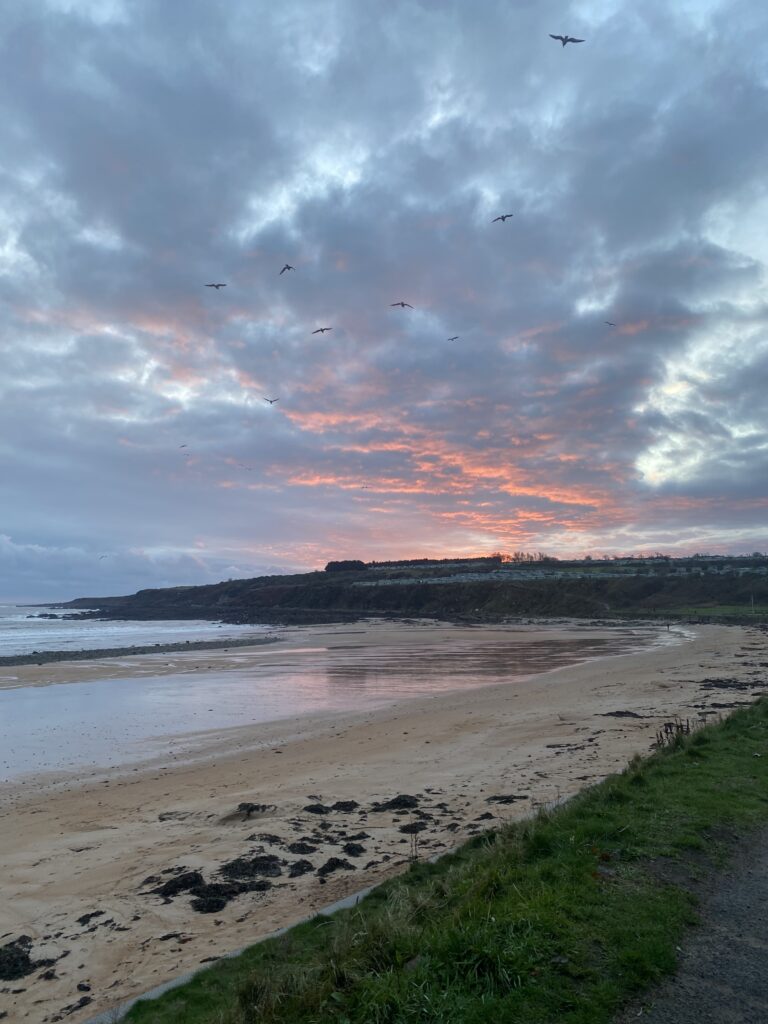
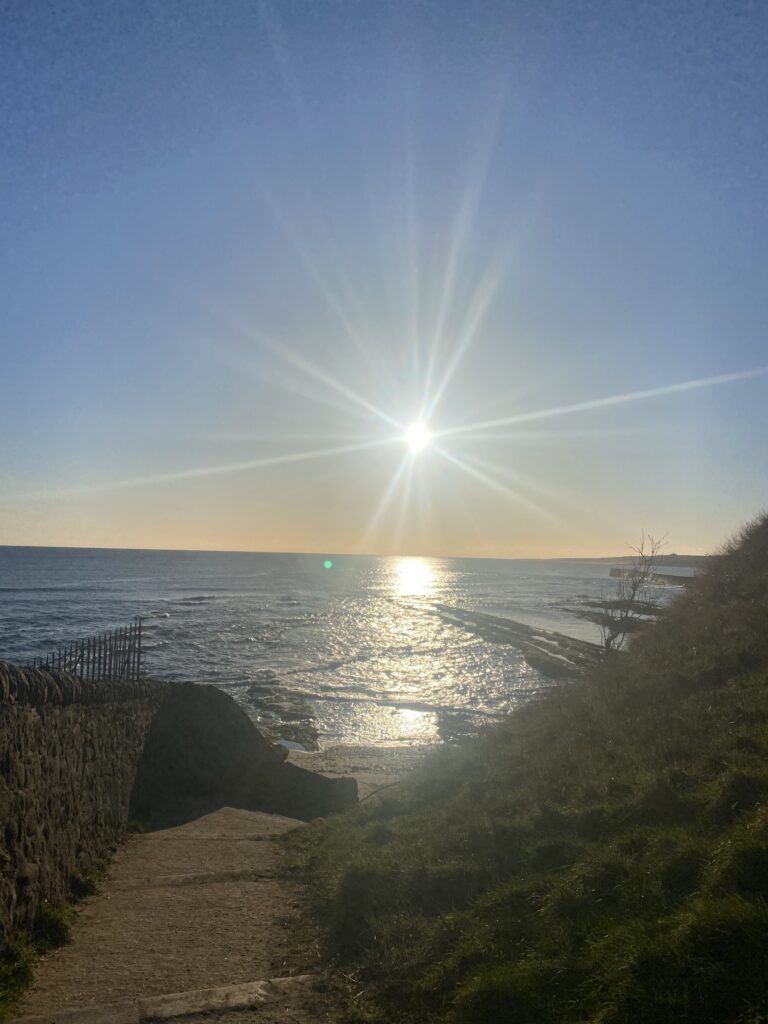
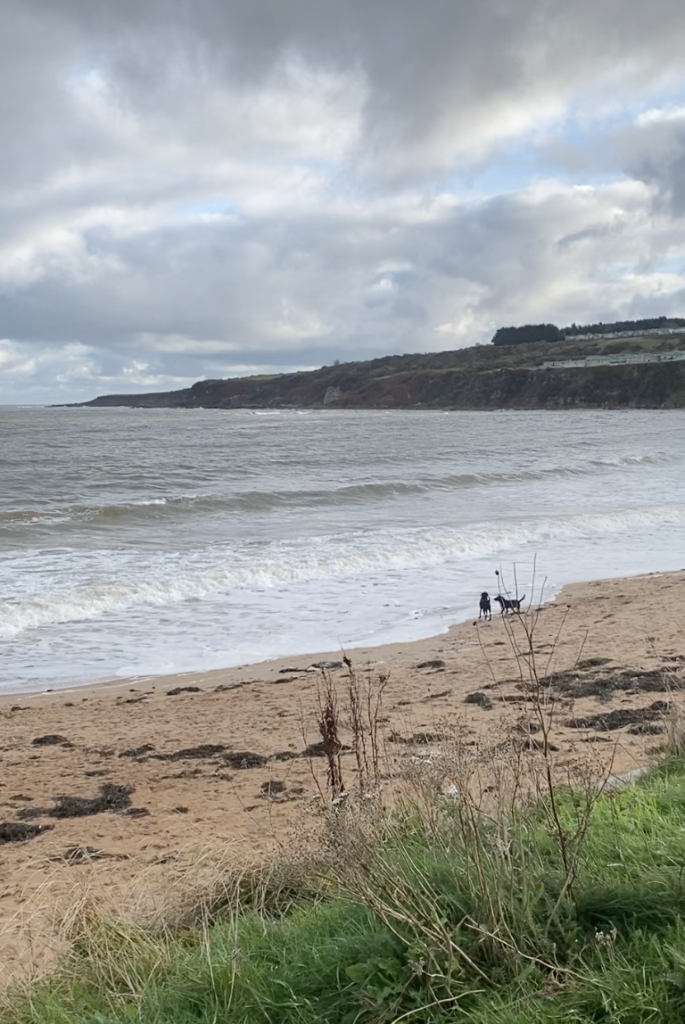
Some of my pictures show how I find peace within myself by being near the ocean. Inevitably, the ocean is always there when walking along the coastline. Yet, with seasonal changes as well as with the tides, the sea seems ever-changing. For me, appreciating these subtle and natural changes helps me to accept that nothing in life is permanent. In turn, this simple acknowledgment brings me peace. Thus, in St Andrews, a (big blue) pocket of peace for me is the ocean – particularly at East and Castle Sands.
My silence…
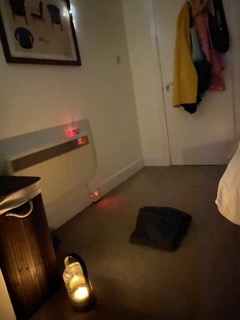
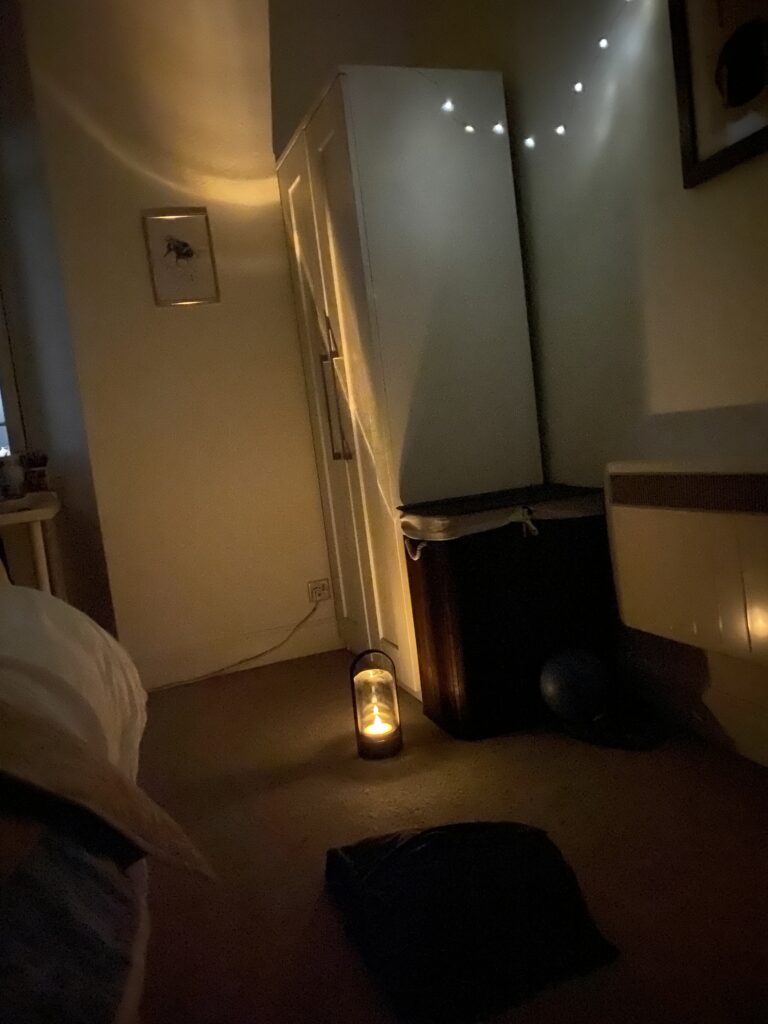
If you have seen other entries of mine, you know that meditation and mindfulness practices are essential to my understanding of peace. Therefore, I offer a little glimpse into how I set myself up for a morning meditation practice in my flat. Personally, I like to meditate early in the morning when the day has not yet begun. Perhaps, you also feel that time in the morning goes by slowly. To be honest, this ‘slowing-down-of-time’ is only if I am up very early or have no obligations. If I am running late for a morning class, time seems to disappear (?). Nevertheless, for me, mornings are still more peaceful because no new emails, no notifications, and no phone calls are ticking in yet. This gives me time to meditate and silence my mind before a new day starts.
My surroundings…
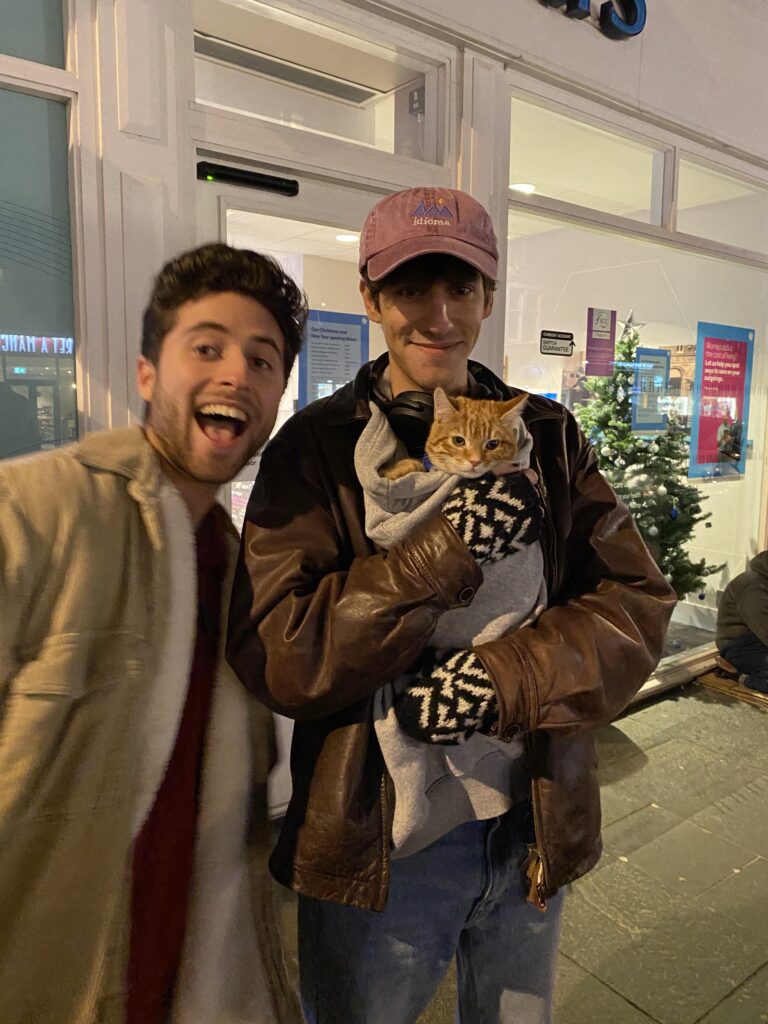
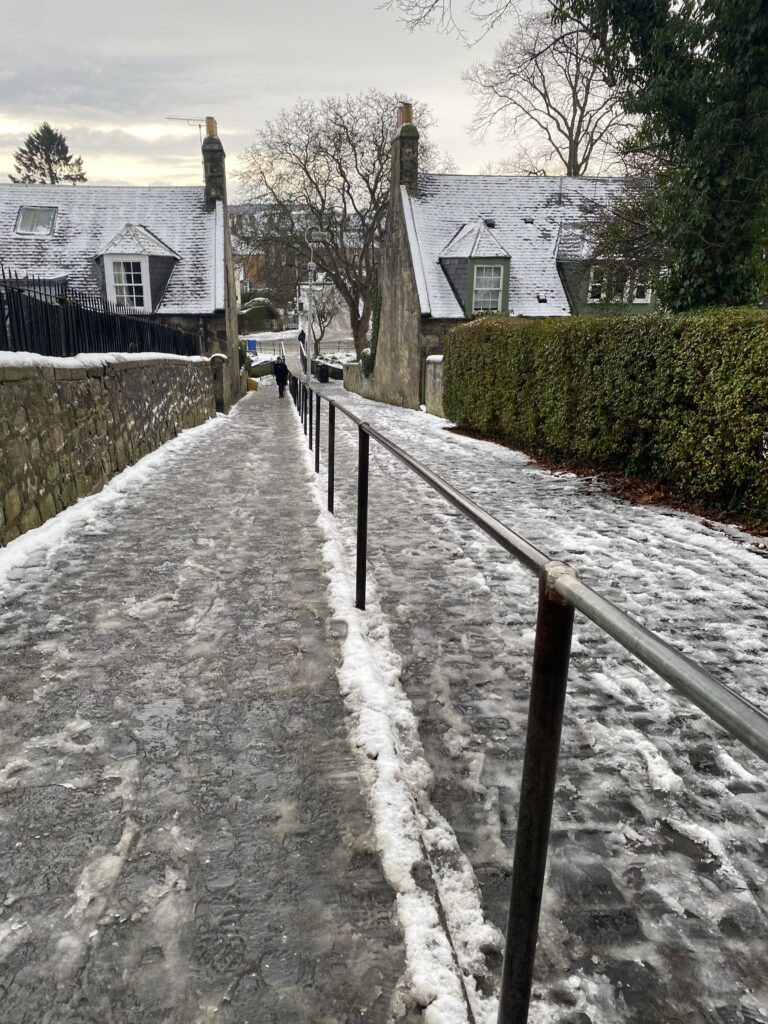
In less apparent ways, I also find peace walking through town on grey days. Transporting our physical bodies while we run other errands can seem mundane and trivial. However, the fact that I, as a woman, can stop up and take a picture on the street in St Andrews indicates the presence of peace. For many others across the world, I know that this is not the case as they might risk getting mugged or worse. Therefore, on days when I feel less excited about life, a simple stroll through town reminds me of the mundane pockets of peace.
When being on the go on these less exhilarating days, I also find peace in seeing friendly faces (as one inevitably does in small St Andrews) and charging my energy from casual social interactions. Other times, however, it feels significantly more peaceful not bumping into anyone. Here, I feature two pictures of such instances. The first one is of two friends of mine that I bumped into on Market Street. They were out walking with their cat, Smalls, which made me smile and forget about my upcoming exams – for a short bit. The other picture is from a snowy afternoon in December when many of my fellow friends had left town. I strolled almost anonymously through town (which rarely ever happens in St Andrews). Thus, these pockets of peace are simply just appreciating the people and the surroundings in any given place.
The presence of other animals…
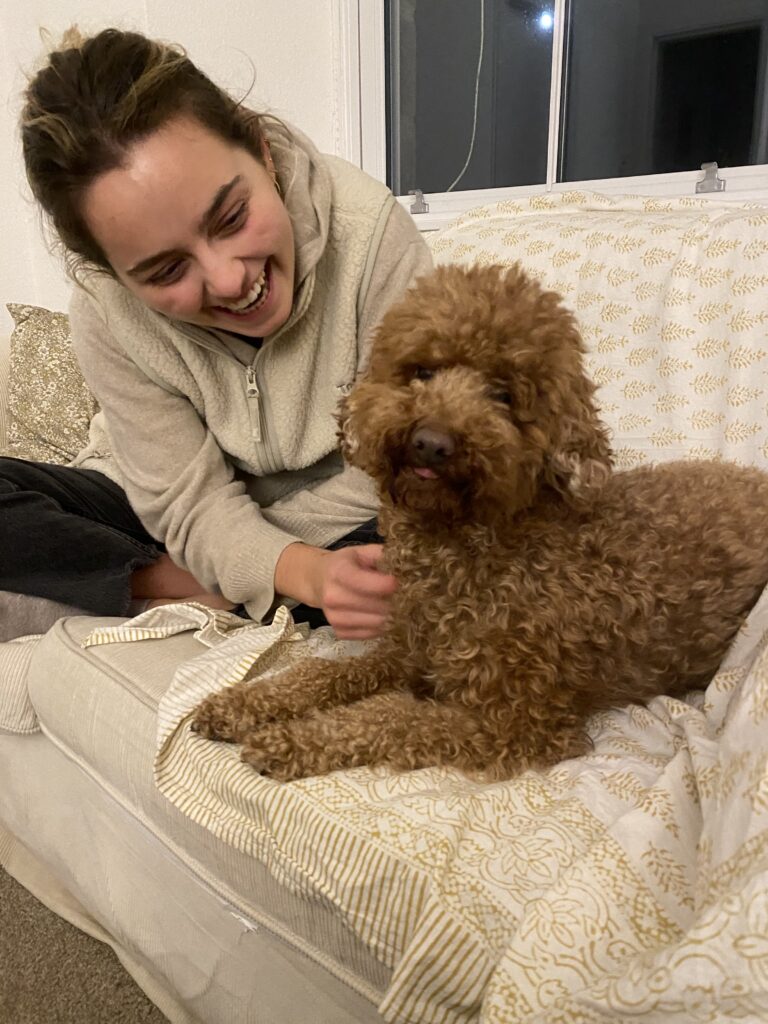
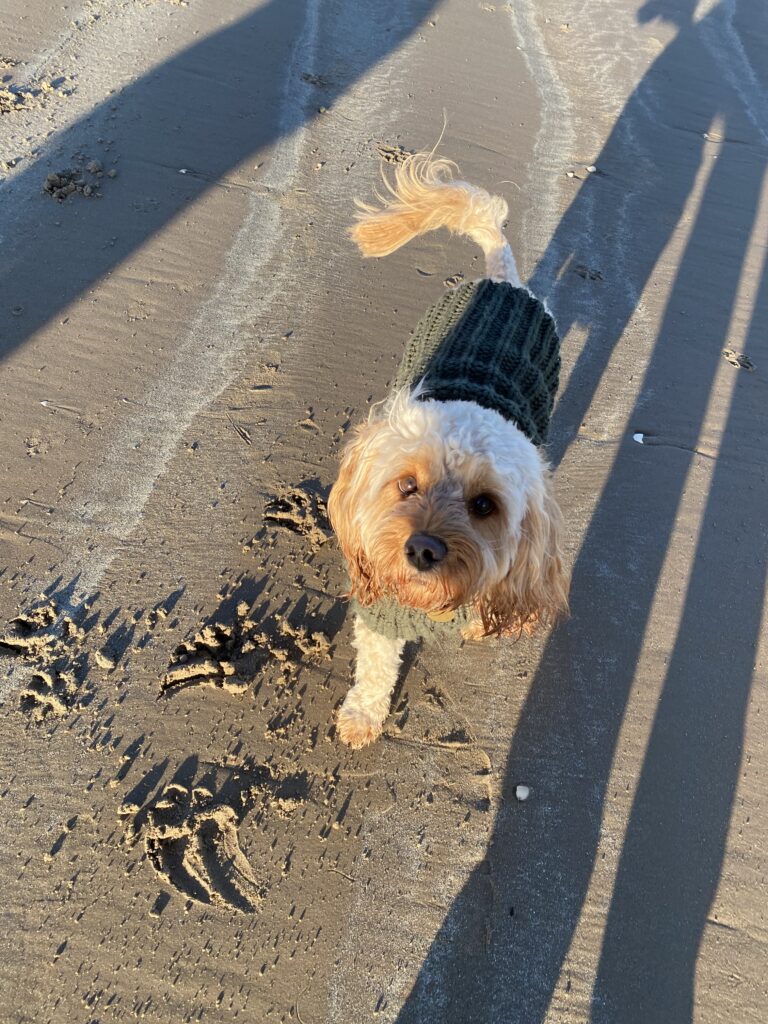
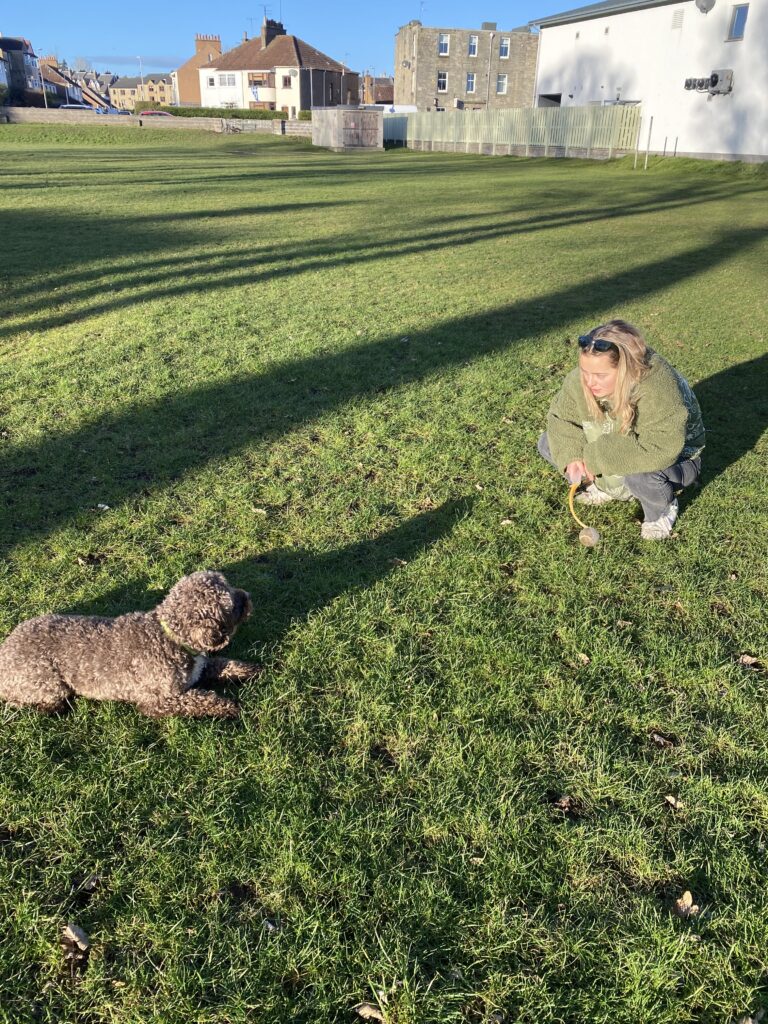
My dear friend, and flatmate, ‘dogsits’ every now and then, which in turn brings me into the presence of other animals. For me, taking care of dogs sparks happy memories of my time with horses. As such, being around animals creates a feeling of peace within me. If you resonate and/or miss the presence of animals, there are many ways to get in contact with dog owners or take part in the dog walking society within the University. So go for it. Seek out and take the actions you need to perhaps find a pocket of peace with a furry friend.
My trivialities…
While they are the deepest and biggest pockets of peace for me, I will not elaborate much on them here (as they are quite self-explanatory). But… Exercise. Friends. And food!
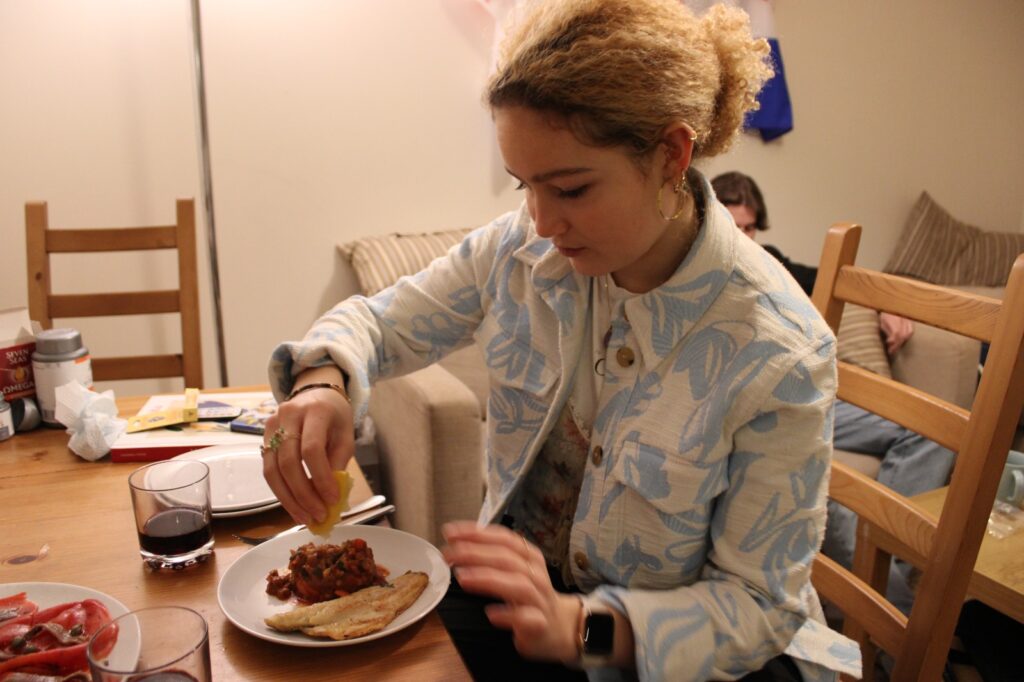
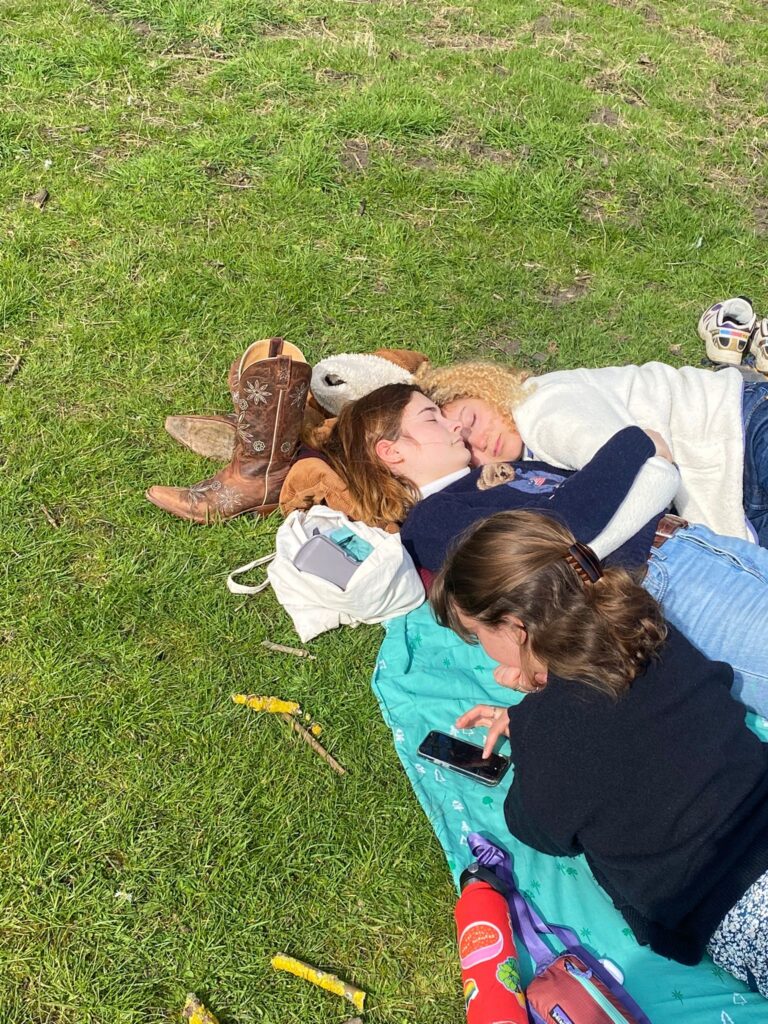
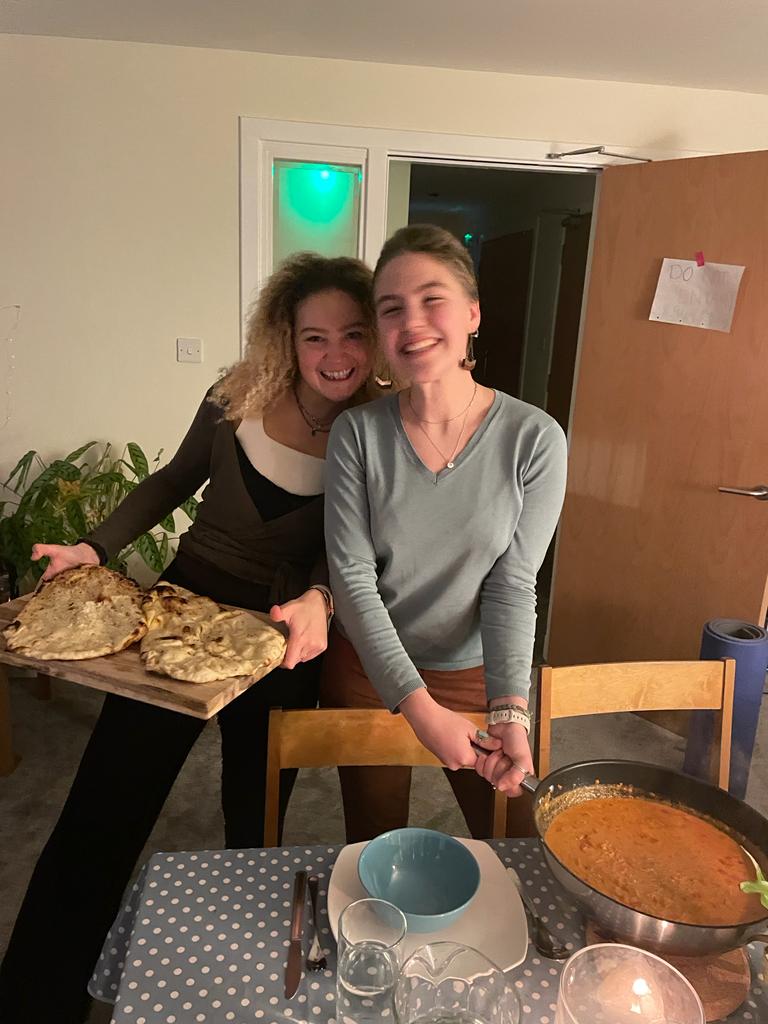
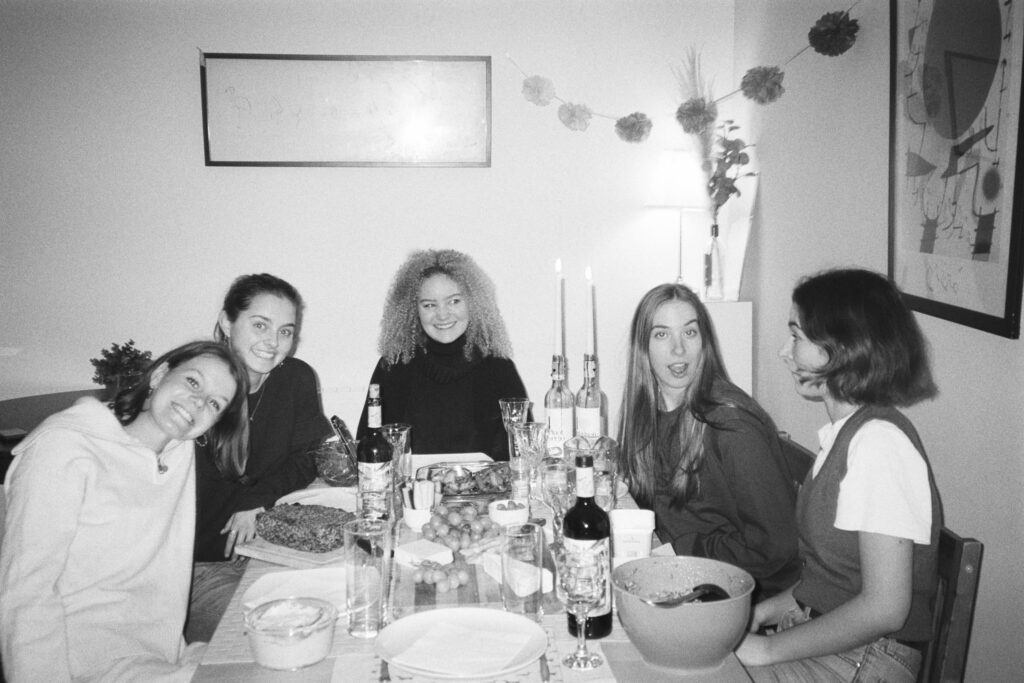
Finding a feasible routine with exercise; having meaningful (or just fun) conversations with good friends; nurturing my body with delicious food; these are all essential aspects of building my inner peace. This might sound trivial. Or it might sound like advice from one of those self-help books; a guide to improving mental wellbeing. However, taking time to recognise and appreciate such moments fosters feelings of peace within me. Maybe those books got it all figured out? This brings me back to the beginning. Inner peace seems to intertwine with mental wellbeing (and vice versa). By its extension, inner peace allows us to appreciate our personal pockets of peace, which I believe helps us explore and develop pockets of peace in the world. The more aware (and grateful) we are about the pockets of peace that exist in our lives, the better we can become at generating them – not just for ourselves but also for others. Peace-building then begins to feel like a tangible, doable thing – a verb, not just a noun. Something that we can all do; in fact, something that we should do – a responsibility we have in life, to notice and build pockets of peace that join up, ripple out and pool around us like the ocean.
What do you think?
- Do you give yourself time to find or notice peace within your everyday life?
- What brings you peace of mind in your everyday life? And what would you identify as your ‘everyday peace indicators’, that help you measure the kinds and levels of peace that you experience?
- How do you talk about peace in conversations with your friends and family members?
- Do you think of peace as a noun or a verb?
- In what ways does inner peace relate to peace in the wider world, in your experience
If you enjoyed this item in the museum…
You might also enjoy ‘Peace as Transcendence‘, ‘Pockets of Peace in Ukraine, Spring 2022: A Reflection’, ‘Peace is Fun!’, ‘Mindful Peace with Haemin Sunim’, and items with the tag ‘Pockets of Peace’.
- For work on peace images, see: https://www.imageandpeace.com
- For more information on the term ‘everyday peace’, look into https://www.everydaypeaceindicators.org
- For some peace-focused research from St Andrews, see https://cpcs.wp.st-andrews.ac.uk